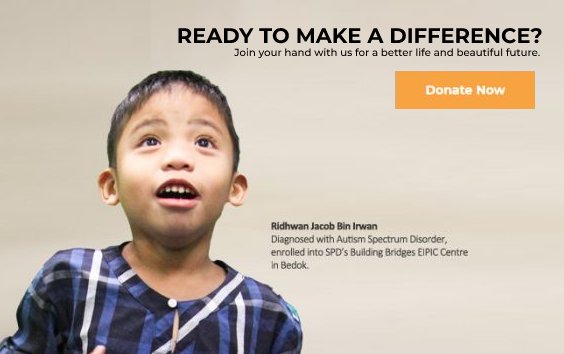Mr See Cher
President, The Society for the Physically Disabled
Dr Adela Tow
Vice-Chairperson, Tetraplegia Workgroup
Dr Ow Chee Chung
Executive Director, The Society for the Physically Disabled
Distinguished guests,
Ladies and Gentlemen,
It gives me great pleasure to join you all today at the opening of the Workshop on Spinal Cord Injury (SCI)
2. I am also glad to note that this workshop is a collaborative effort between The Society for the Physically Disabled (SPD) and the Tetraplegia Workgroup. This workshop brings together people with SCI and those involved in their care. It increases public awareness of the challenges that people with SCI face and the services that are available, to help them re-integrate into the community.
It also provides a platform for the providers of acute and community-based health services to interact with SCI survivors and their caregivers.
3. In the last few years, there has been a growing demand for the services provided by the Society for the Physically Disabled for two groups of people, namely those with stroke and those with paraplegia or tetraplegia. The Society for the Physically Disabled has been working with the Singapore National Stroke Association and the Tetraplegia Workgroup to better service the needs of these groups.
4. From 1973 to 1977, Tan Tock Seng Hospital’s Dept of Rehabilitation Medicine, then the main rehabilitation centre in Singapore, treated 145 traumatic Spinal Cord injuries. A later study showed that in the six years between 1990 and 1995, the numbers had increased to 231. This is an increase from an average of 29 traumatic SCI per year during the period 1973-77 to an average of 39 cases per year for the period 1990-95.
5. The figures that I have mentioned were of cases from one centre, albeit the main centre and did not take into account the cases treated in other hospitals. If all these cases were to be taken into account, the number of people whose lives were changed by SCI would be much higher.
6. Both studies showed that more than 75% of the injuries were sustained from industrial and road traffic accidents.
A majority of the victims were between the ages of 15 and 45 years old. They were young, employable and in the prime of their lives.
7. With improved health care and advances in medicine, more patients with SCI are surviving. Spinal Cord injuries can be devastating and can dramatically alter a person’s life. Besides the physical disabilities, the person has to cope with the emotional and psychological consequence of both the injury and the resulting disability. People who have just suffered SCI fear for their future and may feel confused, frustrated and helpless. Their lives are no longer the way they knew it.
8. In this message ‘Somewhere to Turn’, the late Christopher Reeves, better know as Superman, spoke of his confusion and emotional healing after being paralyzed in a horse-riding competition in 1995. He said, and I quote, “the more I learned, the more I was able to take back control of my life. Information was truly my salvation.”
9. Service providers in the hospitals, voluntary welfare organizations, caregivers and people in the community should play a collective role in providing the necessary information, care and support to survivors of SCI. This will help to ease their rehabilitation process and re-integration into society. Following treatment in the acute hospital, the patients can be cared for and rehabilitated in community-based facilities.
10. The Society for the Physically Disabled provides a comprehensive range of community-based services to meet the needs of its SCI survivors at the different stages of their condition. Besides the post acute rehabilitation centre and day activity centre, the society runs an assistive technology centre which provides training in IT and assistive technology consultations to help the clients gain independence in the activities of daily living and learn new skills. The Society for the Physically Disabled also has a sheltered workshop programme for moderate functioning clients to be involved in purposeful work and social activities, and its Multimedia Centre trains higher functioning clients towards supported and open employment.
11. Let me illustrate with an example of how the SPD’s services and programmes has helped a SCI survivor. Mr KH Lim was 23 years old when he was involved in a road traffic accident. He became a tetraplegic and over the years, fortunately recovered a fair amount of upper limb functions. He was able to travel short distances with his motorized wheelchair. Ten years after the accident, at age 33, the Tetraplegia Workgroup introduced SPD’s services to him. He attended the rehabilitation programmes and traning and skills development programmes, including webpage design courses. Today he is competent in using various softwares and maintains SPD’s computer laboratory. He uses SPD’s special transport service fitted with a hydraulic lift to go to work and has started to occasionally use the MRT to go to work. He also does volunteer work for various welfare organizations.
12. It is also important for us to recognize the contributions of support groups like the Tetraplegia Workgroup.
They play an important role in the rehabilitation and re-integration into society of the SCI survivors. The participants draw hope and encouragement from each other.
13. It is important for the different organizations involved in the care of SCI patients to work together so that the patients can have optimum opportunities to realize their aspirations and lead as normal a life as possible. I applaud SPD and the Tetraplegia Workgroup for coming together and organizing this workshop, I lok forward to more such collaborations between different providers of health care and volunteer groups.
14. I wish you all an enjoyable learning and sharing experience.

